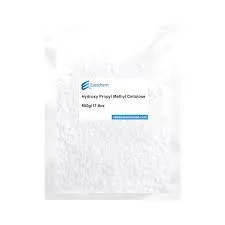
Nov . 09, 2024 08:20 Back to list
HPMC Grades and Their Applications in Various Industries and Products
Understanding HPMC Grades and Their Uses
Hydroxypropyl Methylcellulose (HPMC) is a cellulose derivative that has become increasingly popular in a wide array of industries, ranging from food production to pharmaceuticals. The versatility of HPMC stems from its unique properties, including its gel-forming ability, thickening potential, and film-forming capabilities. However, not all HPMC is created equal; it comes in various grades tailored for specific applications. In this article, we will explore the different grades of HPMC and their respective uses.
What is HPMC?
HPMC is a non-ionic cellulose ether produced from natural cellulose sources. By substituting some hydroxyl groups in the cellulose molecule with hydroxypropyl and methoxy groups, HPMC exhibits enhanced functional properties such as solubility in cold water, thermal stability, and compatibility with a variety of excipients. These characteristics make HPMC a valuable ingredient in various formulations.
Grades of HPMC
HPMC is classified into several grades based on the composition of hydroxypropyl and methoxy groups, molecular weight, viscosity, and specific applications
. Common grades include1. Low viscosity HPMC Typically used in applications requiring film formation and thickening. This grade of HPMC can help improve the texture of food products, allowing for cohesive mixtures that maintain a desirable consistency.
2. Medium viscosity HPMC This grade is versatile, utilized in pharmaceuticals for drug delivery systems. It aids in controlling the release of active pharmaceutical ingredients and enhances the viscosity of suspensions and gels.
3. High viscosity HPMC Known for its thickening properties, high viscosity HPMC is commonly found in cosmetic and personal care products. It acts as a stabilizer for creams, lotions, and other emulsified products, ensuring a smooth consistency.
4. Specialty grades These are designed for specific applications, such as construction, where HPMC is incorporated into mortars, adhesives, and paints to improve workability and water retention.
hpmc grades and uses

Uses of HPMC
The applications of HPMC are vast and diverse, spanning across several industries
1. Food Industry In food applications, HPMC serves as a thickener, stabilizer, and emulsifier. It is commonly used in bakery products, sauces, and dressings to improve texture and extend shelf life. Its ability to form gels at lower concentrations makes it a popular ingredient in gluten-free products.
2. Pharmaceuticals HPMC is essential in pharmaceutical formulations. It acts as a binder in tablet formulations, controlling the release of drugs through matrix systems. Moreover, HPMC is utilized in suspensions and emulsions, where it provides consistent viscosity and stability.
3. Cosmetics In the cosmetic industry, HPMC is used for its thickening and film-forming properties. It enhances the texture of creams and lotions, providing a pleasant sensory experience while ensuring the stability of emulsions. Additionally, HPMC is used in hair care products for its conditioning properties.
4. Construction HPMC is an important additive in construction materials, such as tile adhesives and drywall compounds. Its water-holding capacity allows for longer working times and better adhesion, contributing to the overall durability of construction applications.
5. Personal Care Products Beyond cosmetics, HPMC finds applications in personal care products like toothpaste, where it acts as a thickener, providing a smooth texture while contributing to the product's stability.
Conclusion
HPMC is a versatile and essential ingredient across multiple sectors, including food, pharmaceuticals, cosmetics, and construction. By understanding the various grades of HPMC and their specific applications, manufacturers can optimize their products and meet consumer demands more effectively. As the demand for natural and functional ingredients continues to rise, HPMC is poised to play an even more significant role in various industries, contributing to product innovation and enhanced performance. Whether used as a thickening agent, stabilizer, or binder, HPMC proves to be invaluable in formulating effective and high-quality products.
-
Versatile Hpmc Uses in Different Industries
NewsJun.19,2025
-
Redispersible Powder's Role in Enhancing Durability of Construction Products
NewsJun.19,2025
-
Hydroxyethyl Cellulose Applications Driving Green Industrial Processes
NewsJun.19,2025
-
Exploring Different Redispersible Polymer Powder
NewsJun.19,2025
-
Choosing the Right Mortar Bonding Agent
NewsJun.19,2025
-
Applications and Significance of China Hpmc in Modern Industries
NewsJun.19,2025







